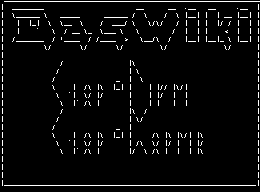- Das Wiki
- zsh.md
- zoneminder.md
- yubikey.md
- yasnippet.md
- xprofile.md
- xmonad.md
- wpa_supplicant.md
- wp3.md
- windows.md
Menu (Edit):
Link List (Edit):
# _ _
# | | | |_ _ __ _ ___
# | |_| | | | |/ _` |/ _ \
# | _ | |_| | (_| | (_) |
# |_| |_|\__,_|\__, |\___/
# |___/
Hugo: The blazing fast static site generator.
Hugo is a static site generator written in Go language. It generates a frame work that can be configured to create just about any website for any situation. It can use yaml, tomly, or even json to store it’s configuration. Markdown is used for content creation, and raw data can be created with either csv or json files.
On working with Hugo
Not all static site generators are created equal. After starting out using jekyll, then moving to hexo, I finally came into form using Hugo. Ever since, creation of static websites has been a blissful existence. What sets Hugo apart from the rest of the pack is frankly it’s creator, Bjorn Erik Pedersen. Bjorn plays one hell of a mean saxophone, is very polite, and has taken a hands on approach to the management of the hugo project. Hugo leverages the speed of Google’s Go Language, Go was built from the ground up to live on the web, so it was a perfect fit to perform the task. Hugo can take a stack of markdown files and compile a rich, featureful, and robust website in a matter of secs. What it generates will be static, meaning there will be no need for additional support services, which only increases it’s appeal to webdevelopers. Hugo can also be used to manage external libraries and dependencies allowing it to leverage all that is needed to meet any web developer’s needs, and once it has generated that website, Hugo can be used as a development server to test the website out. It is truly a write it and rip it solution.
Our coverage of Hugo will include three topics. First are configuration values, then hugo templating syntax will be discussed, and the third topic is yet to be determined.
Usage
Usage of Hugo is almost a brainless activity. Except for running hugo without any flags to perform the
process of actually building your site, the other two primarily used commands are hugo serve and hugo new.
Both of these deserve familiarity in their own right.
The command hugo serve generates the site and then acts as a development server hosting the freshley built
site on http://localhost:1313. If by chance you are using hugo on a remote server, additional flags can be
used such as the -b basename flag. The basename flag tells hugo where to serve the root of your website.
Another often used flag is --bind, which tell hugo what address to bind the developement server to. These
two flags might seem to be equivocal, but they are most certainly not. As the basename of the site can be
10.0.1.1/mysite, which will place the site root at /mysite, but for this example the bind address will be
10.0.1.1. Further options allow for changes to be more visible, such as --noHTTPCache and
--disableFastRender.
Running hugo new site creates a completely new structure for a new site to be built, and hugo new page
somepage.md will create a new markdown file within the content folder that is based off of the archetypal
template page.
Hugo through NPM
One of the cooler aspects of Hugo is the continual expansion of features and ways to use hugo. With the creation of the hugo-bin library for node.js, hugo can now integrate with node.js and the NPM package system. This allows hugo commands to be run as part of node.js scripts, and greatly expands the ability to customize website creation with hugo in a way never thought possible before.
Running hugo is this manner is not necessarily an expansion of hugo’s functionality, but an expansion of the functionality of npm. So, basic understanding of npm and the configuration file for npm, package.json, is required.
Configuration
When it comes to configuring a site in Hugo, what is most important to distinguish are values that are theme dependent from values that are theme independent. There are configuration variables and values that regardless of how the template framework is structured will alter the content of the site and cause a change in what is generated. Then there are values that are completely dependent on the structure of the framework, and if used or not used will cause the generation of a website to fail.
Go Templating
Here we have a quick reference of some go templating tags:
- "." = Current Context
- "$." = refers to the current context in a range or code block.
- "|" = Is a pipe, and can be used to pipe values to functions or methods.
- "$" = Can be used to indicate a variable.
- ":=" = Is used to initialize a variable.
- "=" = Can be used to assign a variable a value.
- ".Page" = Refers to the given page.
- ".Site" = Refers to the site in it's entirety.
- ".Site.data" = Refers to the data folder of the site.
- "" = Is of course a comment.
- "" = Is a comment without whitespaces.
- '' = `Partial` is used to access the theme's partials
- '' = will give you access to a cached partial
- '' = will allow you to access hugo's built in tempaltes.
Hinode template
| Hinode | Blowfish | Hugo Templating |
| Go HTML Templating Cheatsheet | — | — |
References
- https://retrolog.io/blog/creating-a-hugo-theme-from-scratch/
- https://draft.dev/learn/creating-hugo-themes
- https://gobyexample.com/text-templates
 Anoduck's Das Wiki
Anoduck's Das Wiki